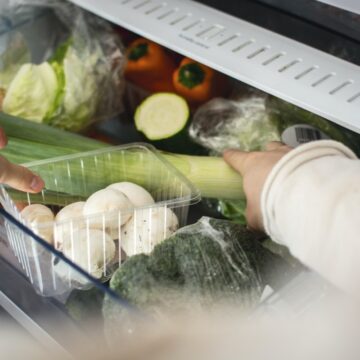
- The global pandemic has boosted awareness over how essential healthy eating is to immunity and overall health.
- When it comes to healthy eating, all experts agree that eating more plants is more beneficial.
- This easy and doable eating plan can help you start so that by the end of the month, your meals will be 70 to 80 percent plants.

The global pandemic has increased consumer awareness about the importance of eating healthy foods that help strengthen immunity and general wellbeing. People these days are becoming more aware that being healthy should mean feeling energized and good instead of feeling deprived and hungry.
Getting to that point though can be quite overwhelming. However, the solution is rather simple. Though experts disagree on some specifics regarding healthy eating, they all agree on one thing: eating plant-based foods is better.
Of course, this doesn’t necessarily mean having to let go completely of meat or animal products. But while meat, eggs and dairy provide nutritional benefits, eating more plants do benefit the body as well as the planet.
Not sure where to start? That’s where this program comes in. Each day offers a doable tip on how to add more plants into your meals to make your plant-filled diet not only attainable but absolutely delicious. What’s the goal? To fill your plate with 70 to 80 percent plants by the end of the month.
Read on to learn more about this four-week program as well as gather new ideas that you can start putting into practice long after the year ends.
Essential tip: Read the entire plan first to make it easier to grocery shop and plan your meals for the days ahead.
Day 1: Freshen your pantry

To have a clean slate to start your month, get rid of any expired food in your pantry and arrange them so it’s visible and free from clutter.
Then stock up on spices to add flavor to your plant-based foods. Besides your favorite flavors, your spice cabinet should include: cinnamon, turmeric, smoked paprika, onion powder, garlic powder, a French spice called Herbes de Provence and cardamom.
Day 2: Connect through crowdsourcing

Arrange Zoom dates or long-distance cookbook swaps with friends and family to make healthy dishes for the next few weeks. (Well+Good’s Cook With Us Facebook group is a great place to find your people.)
Day 3: Stock up your freezer

To have veggies on hand, fill your freezer with frozen broccoli, cauliflower, spinach, cubed squash and cauliflower rice. Often, frozen veggies are healthier than fresh and usually cheaper too. Plus, you can use them longer before they go bad.
Day 4: Have one veggie-focused breakfast a week

When you start your day with a vegetable-filled breakfast, you end up eating more veggies than most people eat all day before noon. Green smoothies are one great way of making them taste good.
One recommended smoothie formula is: leafy greens + healthy fat (avocado or hulled hemp seeds) + protein (Garden of Life Unflavored Grass-Fed Collagen, Four Sigmatic Unflavored Mushroom Protein Powder, and hulled hemp seeds) + frozen fruit + flavorings (cacao, cardamom and cinnamon).
Other veggie-based breakfast choices also include topping your eggs with a ton of wilted kale or spinach, or topping roasted leftover cooked vegetables with a cooked egg.
Day 5: Blend your morning beverage with non-dairy milk

You could easily make your own at home by mixing your coffee or matcha with a plant-based milk or creamer. Good options include the Califia Barista Blend ($22 for six), and the Laird Superfood Creamer ($25 for 16 ounces).
Day 6: Visit the farmers’ market

Taking a trip to your local farmer’s market is one fun way of checking out what food plants are in season that you can add to your meals. You can even ask farmers for tips on how they prepare the unique veggies you find.
Day 7: Use your freezer to reduce food waste

Your freezer is a great tool for prolonging the life of your produce. Wash your leafy greens, blanch them quickly in boiling water, and store in your freezer for you to use later in smoothies and soups.
Source: Well + Good
